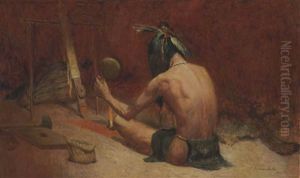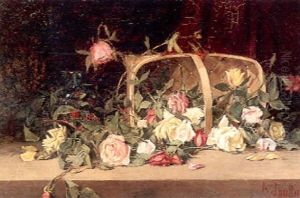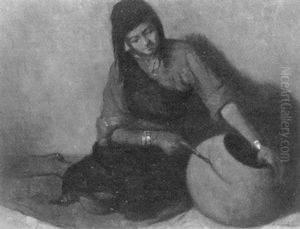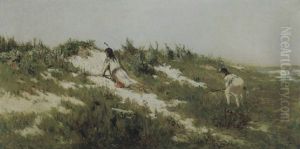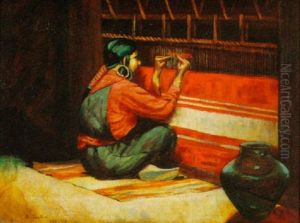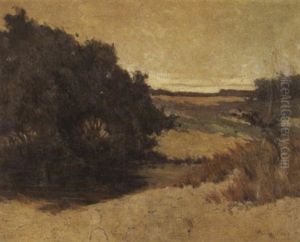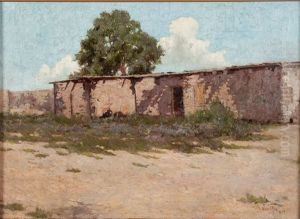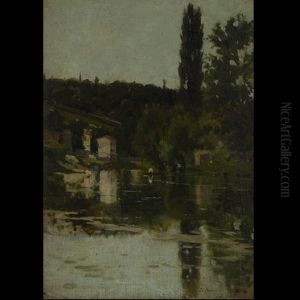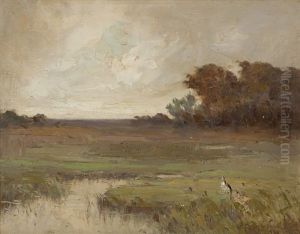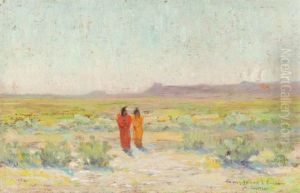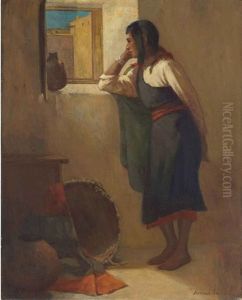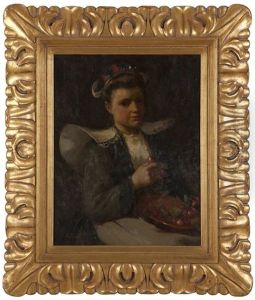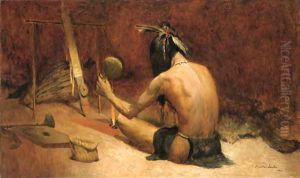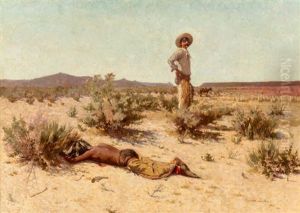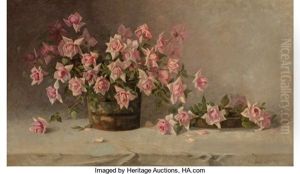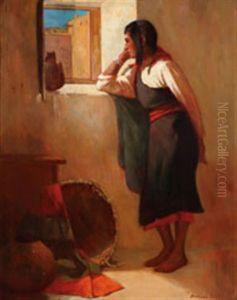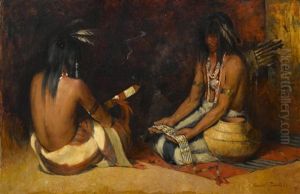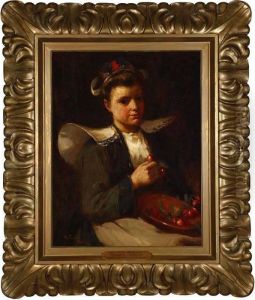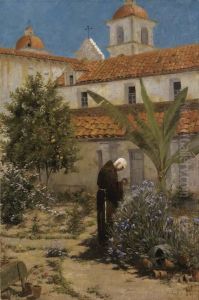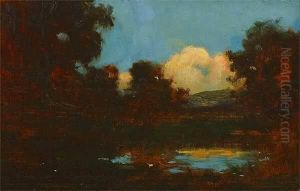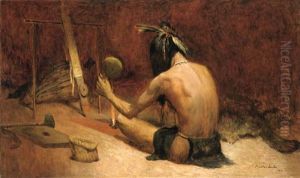Amedee Joullin Paintings
Amedee Joullin was an American artist, best known for his paintings that often depicted Native American life and the American West. Born in 1862 in San Francisco, California, Joullin grew up in an environment that was rapidly changing due to the aftermath of the Gold Rush, which profoundly influenced his later works. He demonstrated an early talent for art, which led him to pursue formal training. Joullin's education in the arts took him across the Atlantic to Paris, where he studied at the prestigious École des Beaux-Arts under the tutelage of Jean-Léon Gérôme, a leading figure in French academic painting. This training provided him with a solid foundation in the techniques of academic painting, which he later adapted to his unique subject matter.
Upon returning to the United States, Joullin settled back in California, where he became deeply interested in the lives and cultures of the Native American peoples of the region. This interest was not merely academic; Joullin spent considerable time living among various Native American communities, learning about their cultures, traditions, and the challenges they faced due to the encroachment of European-American settlers. His paintings from this period are characterized by a deep empathy for his subjects, combined with a meticulous attention to cultural details and a vibrant color palette that captured the essence of the American West.
Joullin's work was well received in his lifetime, and he became a respected figure in the San Francisco art scene. He exhibited his work at various prestigious venues, including the Paris Salon, a testament to the international recognition of his talent. Despite his success, Joullin remained committed to his artistic vision, which was rooted in a profound respect for the natural world and the diverse cultures that inhabited it.
Amedee Joullin's legacy is preserved in the collections of several museums and galleries, where his paintings continue to be admired for their technical skill, emotional depth, and the unique window they provide into a pivotal time in American history. He died in 1917, leaving behind a body of work that remains an important part of the cultural heritage of the American West.
